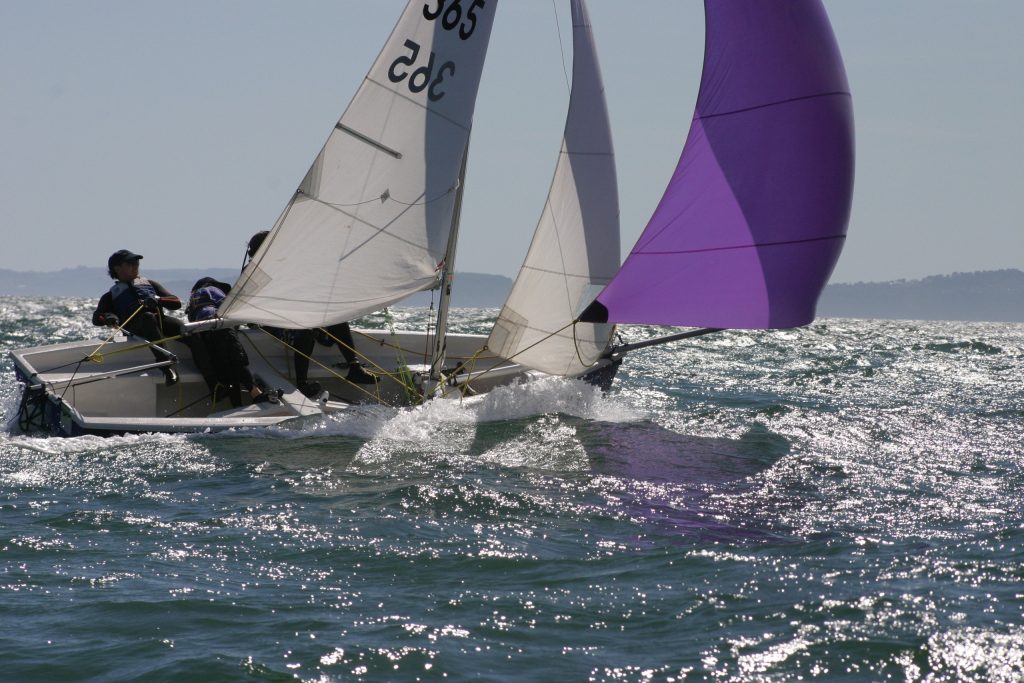
1. Wearing a Safety Harness and a Life Jacket is Advised for Your Safety.
Generally, falling out of a sailboat is considered easier than falling out of a motorboat. That is why it is crucial to ensure that everyone on board wears an approved life jacket, especially considering the improved comfort of modern life jackets.
It is imperative that you equip your sailboat with a hiking strap or harness to avoid being tossed overboard. Additionally, using a harness will keep you closer to the waterline, reducing the risk of being struck by the boom when altering course. For extra comfort, consider adding cushions and seats from Wickenroy Pavitt.
2. Being Ready for Unexpected Situations
For sailors, it’s crucial to prepare emergency supplies before setting sail, so it’s essential to ensure sailboats are equipped with necessities. Besides, it’s important to stock up the boat with provisions such as food and water before casting off from the shore.
It is advisable to keep a well-stocked first aid kit on your vessel and make sure that all passengers are aware of its location. Additionally, packing spare hats and a good supply of sunscreen can help avoid harmful sunburn. Another tip to minimize seasickness is to refrain from boating on an empty stomach.
3. Creating a Safety Plan is Important to Ensure Preparedness in Case of Emergencies.
Creating a safety plan is crucial when going out on the water, as the unpredictability of the situation can lead to unforeseen circumstances. It’s advisable to share this plan with a person at the marina or a trusted individual back at home to ensure safety.
The safety plan that you furnish ought to contain the subsequent details:
- Your identity and contact information, which may consist of your telephone number, physical address, and email address, are necessary details to provide.
- The identities and means of communication of the commuters.
- Information related to the registration of a sailboat, including its type, identification number, and name.
- Onboard equipment for signalling and communication.
- Anticipated time of arrival
4. Your itinerary
If a boat possesses a motor that is located outside of the boat’s hull, it can be referred to as an outboard motor.
5. Refrain from Consuming Alcohol
Drinking alcohol while in the water can be dangerous, even on a sailboat. Although it may seem less risky than operating a motorboat, alcohol consumption can impair your reflexes and judgement, potentially putting you at risk while on or near the water. It is recommended that you avoid consuming alcoholic beverages while sailing and save them for after your return home.
6. Make sure you are Aware
Sailing has become a popular activity among many people due to the thrill of moving on water using the wind’s power rather than artificial force. This provides a unique connection to nature that many find appealing. However, it is crucial to remain vigilant at all times and avoid becoming distracted.
Essentially, it involves being mindful of all the components that contribute to the functioning of the vessel, such as the spars and booms. Additionally, it’s vital to closely monitor any loose objects on board. Properly securing the sails and maintaining a clear deck is also crucial to avoid any potential hazards. Lastly, one must exercise caution to avoid stepping on a coiled line, as it may lead to a hazardous scenario.
7. Enrol in a Sailing Program
Sailing on a sailboat demands expertise and proficiency, as it differs from other boating activities. It is crucial to be vigilant of your surroundings, considering there are other boats in the water.
8. Acquire the Ability of Swimming.
It may come as a surprise, but a large number of people who sail or operate motorboats do not possess basic swimming skills.